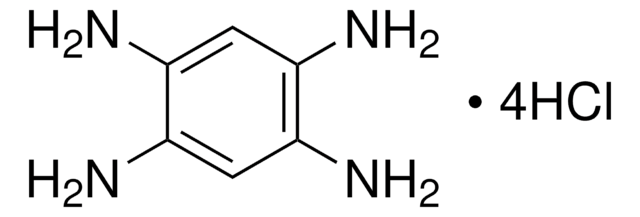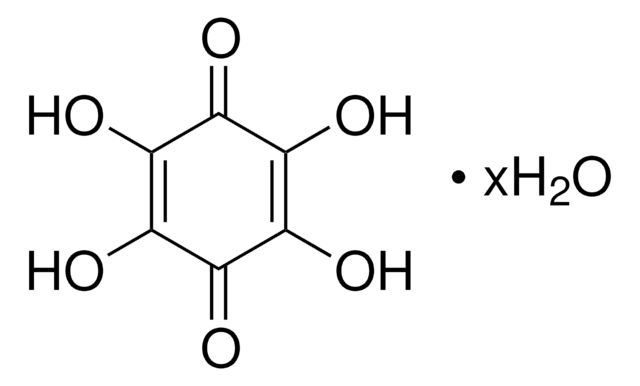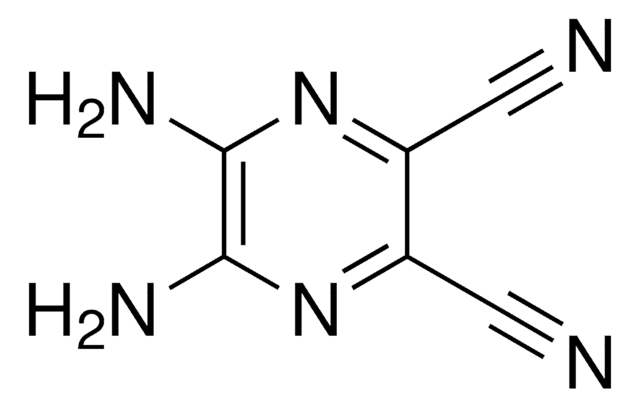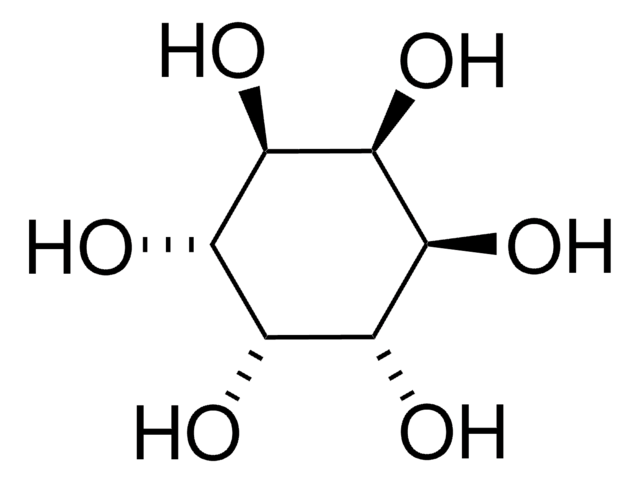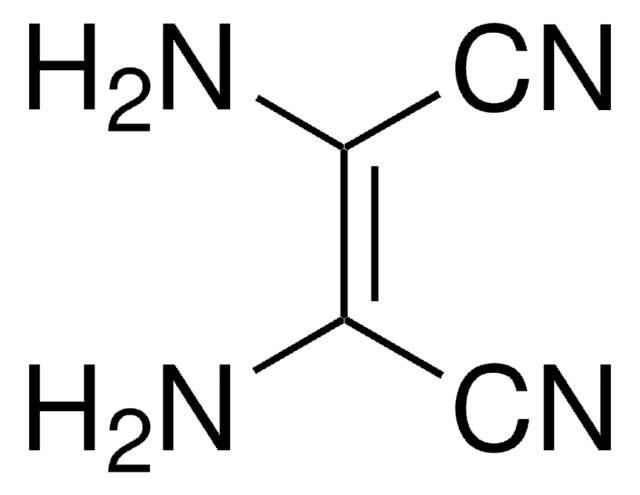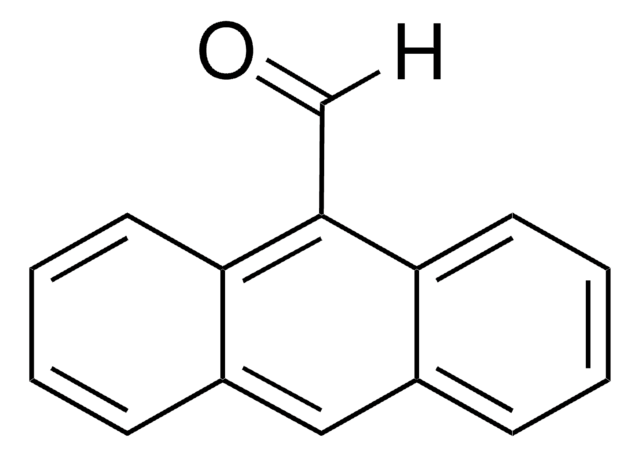128562
Hexaketocyclohexane octahydrate
97%
Synonyme(s) :
Cyclohexanehexone octahydrate, Triquinoyl octahydrate
Se connecterpour consulter vos tarifs contractuels et ceux de votre entreprise/organisme
About This Item
Formule empirique (notation de Hill) :
C6O6 · 8H2O
Numéro CAS:
Poids moléculaire :
312.18
Numéro MDL:
Code UNSPSC :
12352100
ID de substance PubChem :
Nomenclature NACRES :
NA.22
Produits recommandés
Essai
97%
Forme
powder
Pf
99 °C (dec.) (lit.)
Groupe fonctionnel
ketone
Température de stockage
2-8°C
Chaîne SMILES
[H]O[H].[H]O[H].[H]O[H].[H]O[H].[H]O[H].[H]O[H].[H]O[H].[H]O[H].O=C1C(=O)C(=O)C(=O)C(=O)C1=O
InChI
1S/C6O6.8H2O/c7-1-2(8)4(10)6(12)5(11)3(1)9;;;;;;;;/h;8*1H2
Clé InChI
MQIMWEBORAIJPP-UHFFFAOYSA-N
Description générale
Hexaketocyclohexane octahydrate also known as Triquinoyl octahydrate is an organic compound, often utilized as a building block in various organic reactions, including the synthesis of water-soluble π-conjugated hexaazatrinaphthylenes and their derivatives.
Application
Hexaketocyclohexane octahydrate has been used in the preparation of hexaazatriphenylenehexacarbonitrile.
Code de la classe de stockage
11 - Combustible Solids
Classe de danger pour l'eau (WGK)
WGK 3
Point d'éclair (°F)
Not applicable
Point d'éclair (°C)
Not applicable
Faites votre choix parmi les versions les plus récentes :
Déjà en possession de ce produit ?
Retrouvez la documentation relative aux produits que vous avez récemment achetés dans la Bibliothèque de documents.
Synthesis and some reactions of hexaazatriphenylenehexanitrile, a hydrogen-free polyfunctional heterocycle with D3h symmetry.
Kanakarajan K and Czarnik AW.
The Journal of Organic Chemistry, 51(26), 5241-5243 (1986)
Lei Wang et al.
Nanoscale, 9(12), 4090-4096 (2017-03-16)
Nanostructured semiconducting polymers have emerged as a very promising class of metal-free photocatalytic materials for solar water splitting. However, they generally exhibit low efficiency and lack the ability to utilize long-wavelength photons in a photocatalytic oxygen evolution reaction (OER). Here
Hao Huang et al.
Advanced science (Weinheim, Baden-Wurttemberg, Germany), 7(9), 2000012-2000012 (2020-05-10)
The 2D conductive metal-organic frameworks (MOFs) are expected to be an ideal electrocatalyst due to their high utilization of metal atoms. Exploring a new conjugated ligand with extra active metallic center can further boost the structural advantages of conductive MOFs.
Notre équipe de scientifiques dispose d'une expérience dans tous les secteurs de la recherche, notamment en sciences de la vie, science des matériaux, synthèse chimique, chromatographie, analyse et dans de nombreux autres domaines..
Contacter notre Service technique![Dipyrazino[2,3-f:2′,3′-h]quinoxaline-2,3,6,7,10,11-hexacarbonitrile 95% (HPLC)](/deepweb/assets/sigmaaldrich/product/structures/151/558/c0e2c95f-5228-4864-a7a5-4b9765a19840/640/c0e2c95f-5228-4864-a7a5-4b9765a19840.png)
